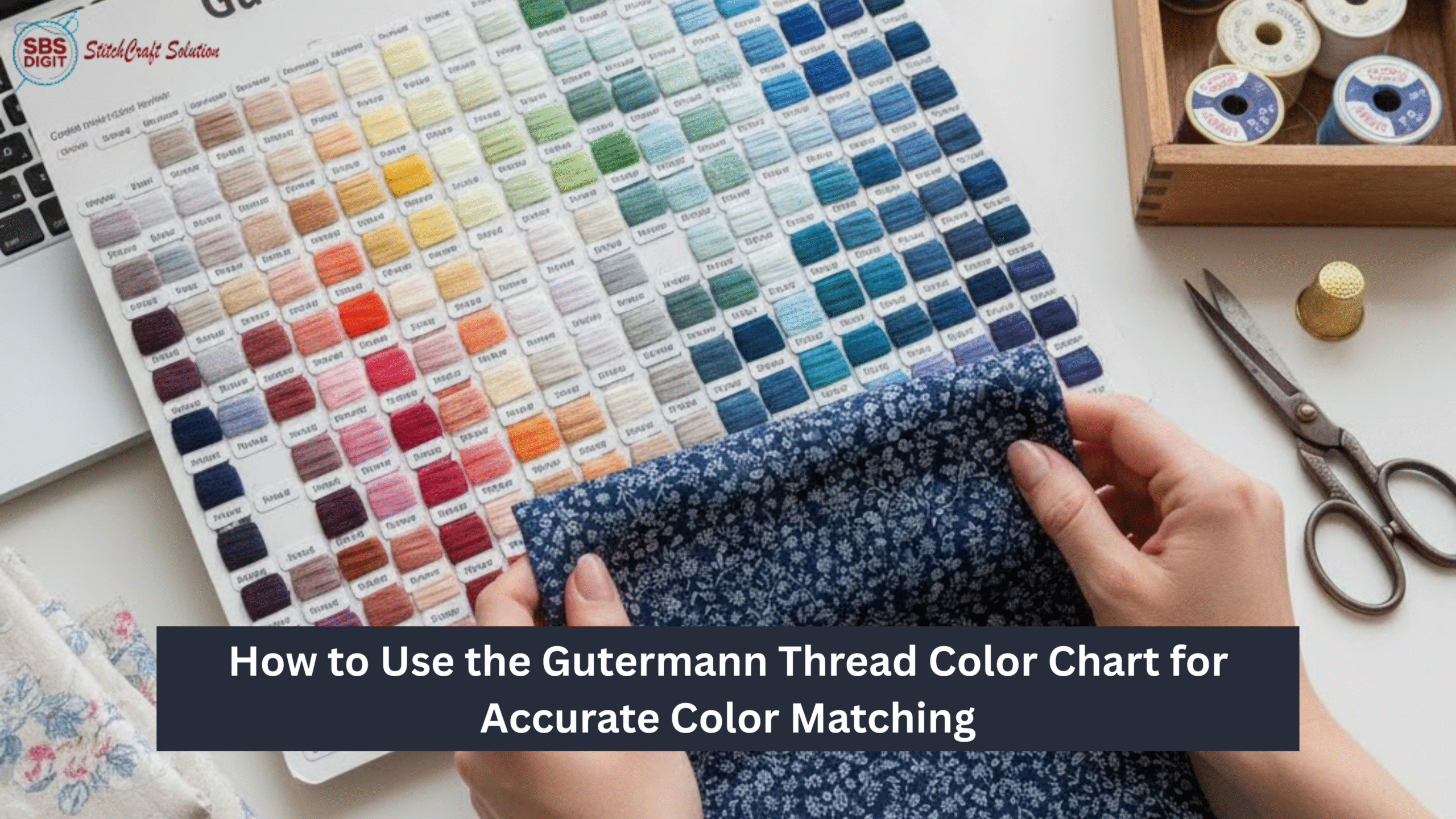When it comes to sewing even the smallest of details could make all the difference. The correct stitch, the right tension, and most importantly the precise thread color. For sewers that demand high-end quality and preciseness, Gutermann thread is a must. But with their vast array of thread colors and types ranging from the widely-loved Gutermann Sew-All thread to the specialized Gutermann cotton thread how can you ensure that you get a perfect exact match each time? The solution lies in mastering the Gutermann thread color chart.
Why the Gutermann Thread Color Chart is Essential
A photo or monitor will never be able to replicate the subtlety of a thread’s colors. Factors such as the calibration of the screen, lighting, and the natural luster of the material can alter your perception. This is where a tangible Gutermann Thread Color Card is a valuable tool.
Charts or cards serves as an actual reference, usually with actual thread swatches, or high-resolution prints that cover the entire spectrum of colors. It is a standardization of colors, and bridges the gap between what you see on the internet and what you actually get. Utilizing it with the Gutermann Thread Color Chart can be a sign of expertise and should ensure that you are using the proper Gutermann thread color numbers to ensure perfect fabric blending or contrast.
Navigating the Gutermann Thread Color Numbers
The key to speedy and accurate match-ups is the uniform system of numbering. Every color of Gutermann’s range Gutermann color range has a distinct code.
1. Understanding the Codes
If you’re looking at the Gutermann Sew All thread color chart or a particular Gutermann cotton thread color chart the basic structure is the same. It’s the Gutermann thread color numbers are the most reliable identifier. If you see a matching color on your card, write that number. This number will be your trusted identification for buying that specific color, regardless of the place you shop.
2. Physical Charts vs. Digital Charts
Many sewers are looking for the Gutermann thread chart color in PDF for ease of use however nothing is better than the actual Gutermann thread color card.
- Physical Card: offers real thread samples or close to perfect color reproduction, removing color shifts caused by monitors. It is the most secure method of real-time colour matching.
- Digital Chart (PDF): Useful to browse for the first time or check the color of a number while you are away from your stash. But, make sure to verify your final selection against the actual card or the fabric.
Step-by-Step Guide to Accurate Color Matching
Making sure you get a perfect match with this Gutermann colour chart is a straightforward but meticulous procedure.
Step 1: Prepare Your Fabric and Lighting
The surrounding environment has a significant impact on perception of color. Be sure to check colors under the lighting conditions the finished product will be most likely to be seen in. Light from natural sources (but non-direct sunlight) is usually the gold benchmark for accurate color matching. Lay your project flat onto a neutral gray or white surface.
Step 2: Compare the Gutermann Thread Color Chart
Get the Guttermans colour chart or Gutermann thread chart and lay them directly over the material.
- Blending It is your goal to make the thread disappear completely into the fabric. Move the thread card across the fabric until a swatch or the print representation seems to vanish. Pay attention for your undertones of the fabric and the thread (e.g. Is the red a little bluer or orange?).
- for Contrasting Pick a color palette with the desired visual impact. However, even in contrast, make sure the color you choose matches the fabric’s tone.
Step 3: Check for Thread Luster
Keep in mind the fact that the Gutermann thread is available in a variety of types of materials (polyester silk, cotton) and each one has a distinct luster (sheen).
- Gutermann Sew All Thread (polyester) is a light-colored thread with some sheen, which can cause the hue to appear slightly lighter than matt Gutermann cotton thread.
- Be sure to use the right chart for the type of thread you require, since the same color may appear slightly different due the material composition.
Step 4: Record the Number
After you have found the right shade, make sure you record the Gutermann thread colour number. This simple action ensures that next time you require that thread, you avoid any guesswork, thereby establishing the expertise within your workflow.
Beyond Color: Understanding the Gutermann Thread Weight Chart
While color is essential for a professional match, it also requires the proper amount of weight and kind of thread. It also requires complete authority to your trade.
| Thread Type | Typical Weight | Best Use |
| Gutermann Sew All | Tex 30 (or 50 wt) | All-purpose seams for all purposes and topstitching for the majority of fabrics. |
| Gutermann Cotton Thread | Variable (e.g. 30 wt, or 50 wt) | Crafts, patchwork, quilting and even on natural fiber clothing. |
| Gutermann Top Stitch | Tex 40 | Buttonholes, decorative seams and more heavy fabric. |
The Gutermann thread weight chart can help you determine the right thickness (weight) to match the type of seam and the fabric that you’re working on. If you choose a thread that’s too heavy will cause puckering in delicate fabrics or a thread too light may cause damage to denim.
Conclusion: Investing in Precision
Understanding the Gutermann thread color chart will increase as well as the high-end of your work. When you rely on the actual Gutermann thread color card and knowing what are the Gutermann thread color numbers, you can eliminate any guesswork about color.
When you are planning your next project get rid of the uncertainty and embrace the confidence that comes from using the Gutermann colour chart. Check out the SBS Digit for additional information to improve your sewing skills and maximising the lifespan of your guterman thread stash. A perfect match is no longer a matter luck, but instead a thing of process.




wonderful post, very informative. Iponder why the other experts of
this sector do not notice this. You should proceed your writing.
I’m confident, you have a great readers’ base already!